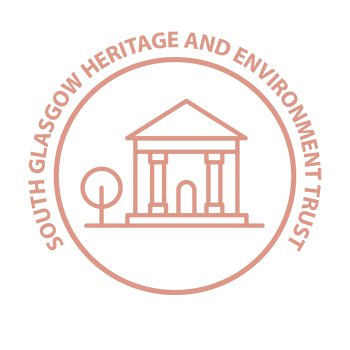FEATURED
First Hampden Archaeological Excavations
D-DAY 1 07 June 2021
History teacher and new SGHET board member Thomas Oldham digs into the archaeological excavation at First Hampden Park and what the Archaeology Scotland volunteers are hoping to find at the old site of the world’s first international football stadium …
So, it’s day one here at First Hampden. The tension is palpable and the excitement bubbling, ahead of what is expected to be a special and historic moment for Scottish football. The away team are wearing yellow and have arrived early – though their captain appears to be running a little late – that’s Kieran (not Trippier), from Archaeology Scotland…
Kieran is a friendly and enthusiastic guy, and even has time to have a wee blether with me as we walk through the tunnel (of verdant green) towards his team (of volunteers…OK, OK, I’ll stop now)… Annoyingly he has already started answering my deep philosophical questions – he knows what idiots like me think of archaeology and is already infecting me with his enthusiasm. My inhibitions are not at all connected to the fact I’m English.
Is this the site of a fantastical early drubbing of England by Scotland (5-1) in 1882? I used to think that the English clearly built the first purpose built international football stadium somewhere in England and that we, the English, invented the passing game that we know today…but anyone here will tell you (correctly) that it was the other way around.
Quite what evidence they are hoping to find of the 5-1 drubbing I’m not sure, copious amounts of yeast from spilled celebratory pints? Huge chunks of chewed tobacco spat from nervous English mouths? Maybe a cup?! Maybe there’s bleedin’ treasure down there! Who knows?
I am currently sitting in my loftily placed media box high in the North stand (i.e. my flat on Kingsley Avenue). As I look down, the team are now standing around in a circle (beautifully planted by volunteer gardeners David and Tahitia McCabe) and are discussing tactics and having a wee stretch. The topic of temperature drifts in the wind – it is uncharacteristically warm for a home game!
So, to ‘pitch’ out the week’s dig to you, the work will involve two plots in the beautiful Kingsley Gardens, an ultrasound scanning of the Hampden Bowls bowling green, and a dig in the trees in Queen’s Park recreation ground between the railway and skate park.
The bowling green ultrasound aims to seek out the centre spot and maybe some old pitch lines like penalty areas. The recreational ground dig aims to find evidence of the grandstand. And the rose garden dig hopes to find remains of the clubhouse.
We have maps, know roughly where all this was (before the sleepy Cathcart circle line rudely blasted its way across Southside), know what happened here, and therefore why it is such a significant site. So, why dig here? I ask.
Being an oft-harsh critic, a historian, and a history teacher who spends their life desperately drawing out explanation, explication, and justification from begrudging, opinionated teenagers, I really, really want to know why we (humanity) bother with things like this. Hopefully we will start to find some answers from this enthusiastic and open-minded bunch of (mostly volunteer – much respect!) archaeologists. It can’t just be an opportunistic moment to get coverage for the bowling club, via a tournament programme filler during Scotland’s first international tournament in a generation, can it?
As we walk and talk, Kieran excitedly says he doesn’t even know what size this pitch was, or how big the penalty areas were. No wonder Scotland won 5-1, aware of England’s ‘prowess’, they probably just put the penalty spot 30 yards up the pitch!
A little later on I catch up with the team deep in the woods of the recreation ground. I finally ask Kieran why they are here and what they hope to find. While politely ‘understanding’ my scepticism of digging for things we know about and have a clear map of, his enthusiasm for the dig is palpable and catching.
First and foremost it’s about finding things that relate to the structures he says – it would be really great to find traces of the old clubhouse, that’s the dream! That is, a piece of the foundations from what they think is the same building that now serves as clubhouse to Hampden Bowls (give or take the odd extension).
There is also talk of trying to find a piece of old turnstile – Hampden was the first ground to have had them! Kieran laughs. He’d even be chuffed with a button or two, at which point Detectorists is mentioned and, like that, a ring pull emerges from the top layer (date unkown, probably Irn Bru). Most importantly though it is about deepening that sense of place and the layered history of Southside Glasgow, something that we at SGHET also care a lot about.
Meanwhile, the team have taken the top layer off their plot and are in good spirits. So far, the artefact tray has a piece of a till (!) and a lovely old Glasgow brick from Paterson and Sons (which once stood at 522 Pollokshaws Road). After a wee chat about how to smash a till open and who might have been robbed, the brick leads the conversation. This brick correlates with others used in late 19th century Glasgow. Is it a remnant of the grandstand? Or a piece of railway construction material? Or just a random old brick? Whatever it’s from, a locally made 19th century brick seems a fitting first find to start this session of industrial archaeology.
You can find out more about Scottish brickmaking here and more about Archaeology Scotland’s excavations at First Hampden here.
By Thomas Oldham, SGHET Board Member.









no replies